We went for the short option on the sub. I don't do that well in enclosed spaces.
The tour was given by a gentleman who looked like the picture perfect naval captain with his white roll neck fisherman's sweater matching his white, neatly cropped beard and weather beaten brown face. All he needed was a pipe.
The tour started outside the sub, with an overview of what life would have been like on board and her naval history as a Cold War spy vessel. 69 souls would have been packed on board for months at a time, with water supplies strictly rationed and used from everything from cooking to washing, to flushing the toilets. As our guide explained with a wry smile, the air would have been rather ripe after a few days.
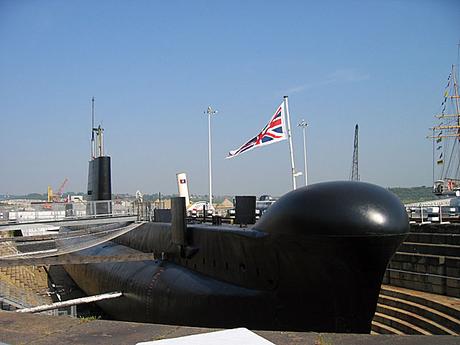
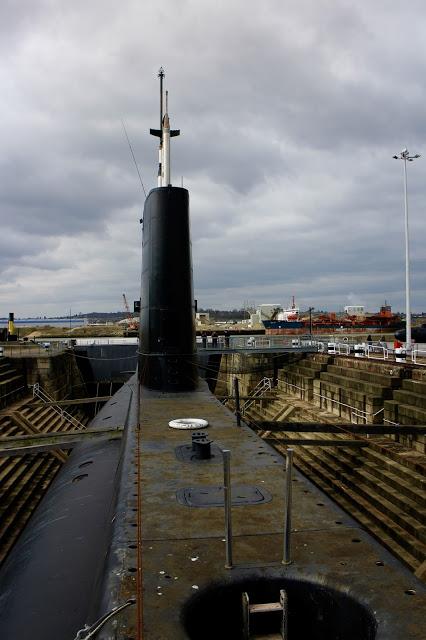
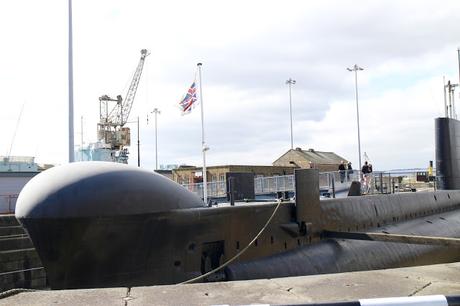 The Ocelot is an Oberon class diesel electric submarine (no, I have no idea what that means in practice) that was first launched in May 1962 and then retired in August 1991. Life on board was narrow, crowded, noisy and hot, with little personal space and only three changes of clothes per person for the three months you could be at sea for. The mere thought of that makes my stomach flip if I am honest. A naval career is not one I am even vaguely drawn towards.
The Ocelot is an Oberon class diesel electric submarine (no, I have no idea what that means in practice) that was first launched in May 1962 and then retired in August 1991. Life on board was narrow, crowded, noisy and hot, with little personal space and only three changes of clothes per person for the three months you could be at sea for. The mere thought of that makes my stomach flip if I am honest. A naval career is not one I am even vaguely drawn towards.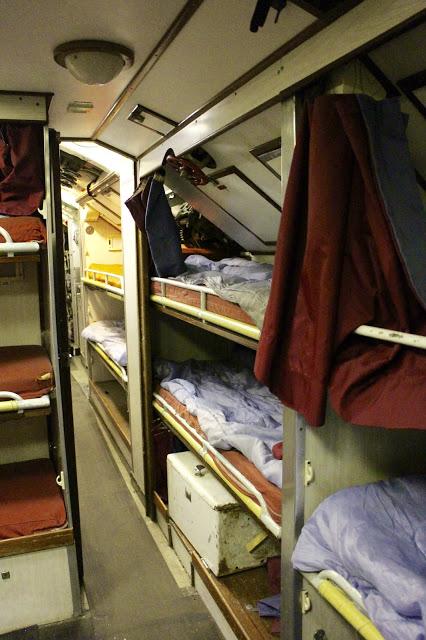
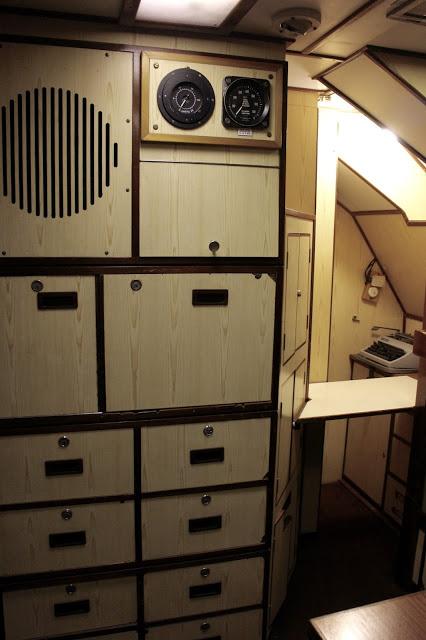 We were warned before going on board that to move from one end of the ship would involve being able to navigate through three hatches. The choices were to grab the rail above your head and swing both feet through, or go through one leg at a time. Belly diving was not recommended. I navigated the first two sideways and got braver for the final hatch and swung my way through. I didn't really have any option though, the width of the hatch base on the final way was significantly longer than the others, and going sideways would have left me stranded like some form of beached sea creature. A whale seems like an unnecessarily harsh description, but it is the one that came to mind. For obvious reasons, this tour is not one that is suitable for individuals in wheel chairs or with mobility issues.
We were warned before going on board that to move from one end of the ship would involve being able to navigate through three hatches. The choices were to grab the rail above your head and swing both feet through, or go through one leg at a time. Belly diving was not recommended. I navigated the first two sideways and got braver for the final hatch and swung my way through. I didn't really have any option though, the width of the hatch base on the final way was significantly longer than the others, and going sideways would have left me stranded like some form of beached sea creature. A whale seems like an unnecessarily harsh description, but it is the one that came to mind. For obvious reasons, this tour is not one that is suitable for individuals in wheel chairs or with mobility issues.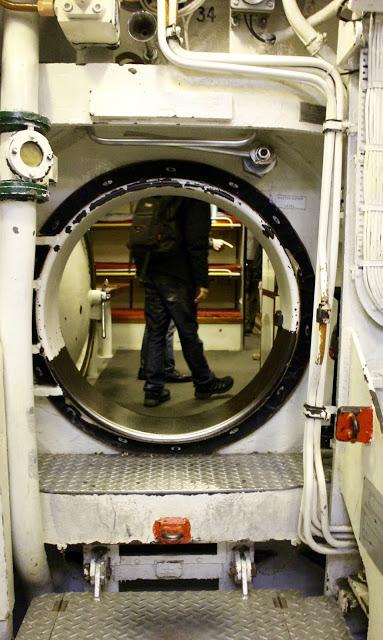
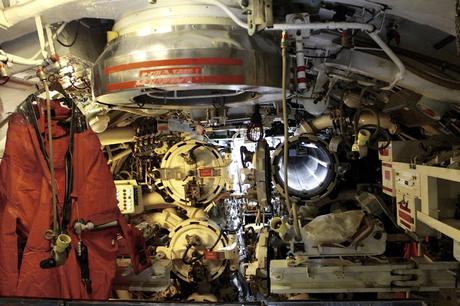 By far the coolest part of the Ocelot is the central command chamber where the periscope is stored. This feels like something out of a 1970's Bond film. I commented to my father that I am in awe of anyone who can build something this convoluted and complicated - the amount of wires, dials, switches, gauges, pipes, clamps, valves and other paraphernalia is rather jaw-dropping and yet it somehow all connects together to make a giant boat that quite happily floats underwater for months at a time. Ain't technology an amazing thing?
By far the coolest part of the Ocelot is the central command chamber where the periscope is stored. This feels like something out of a 1970's Bond film. I commented to my father that I am in awe of anyone who can build something this convoluted and complicated - the amount of wires, dials, switches, gauges, pipes, clamps, valves and other paraphernalia is rather jaw-dropping and yet it somehow all connects together to make a giant boat that quite happily floats underwater for months at a time. Ain't technology an amazing thing?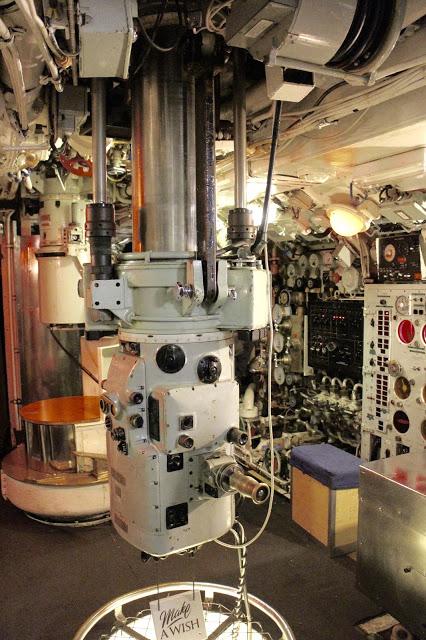
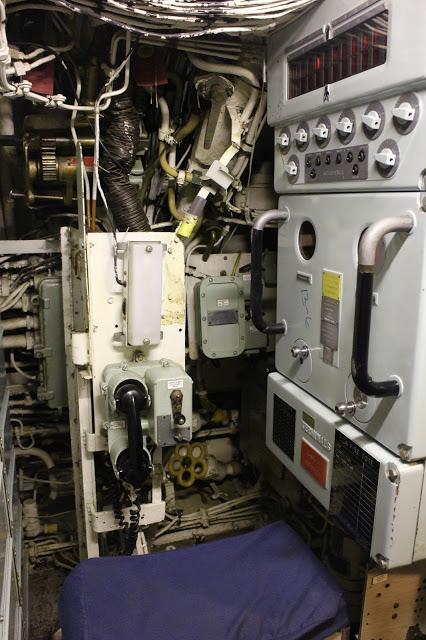
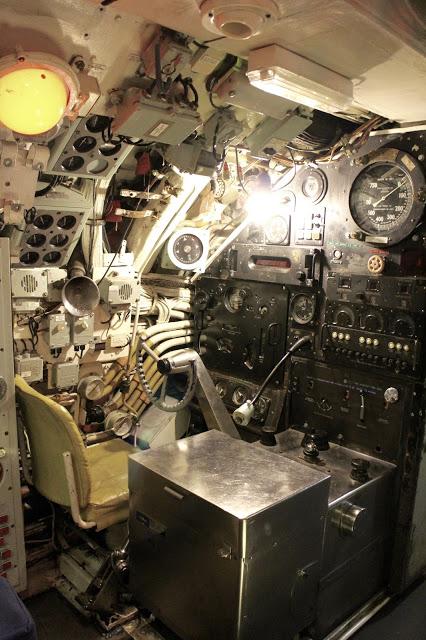 The second tour of the day was the Victorian Ropery at the far end of the Dockyards. This is one of the older sections of the Dockyard and this time our tour was given by the foreman of the Ropery. The year is 1875 and we are shown what life would have been like in the Ropery for the hundreds of workers.
The second tour of the day was the Victorian Ropery at the far end of the Dockyards. This is one of the older sections of the Dockyard and this time our tour was given by the foreman of the Ropery. The year is 1875 and we are shown what life would have been like in the Ropery for the hundreds of workers. 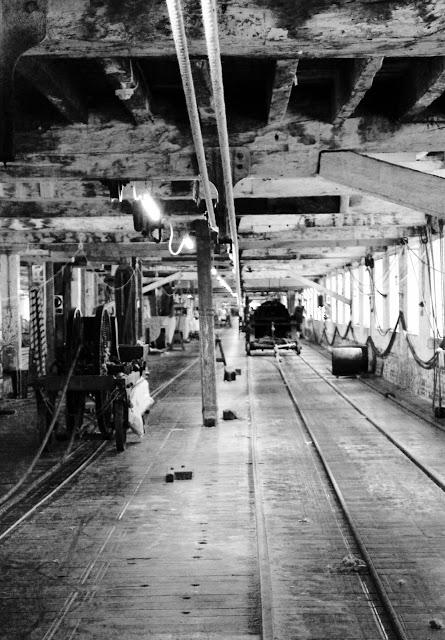
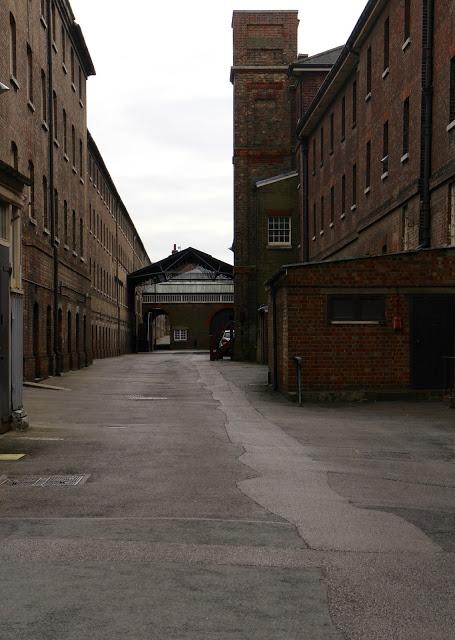 What is intriguing about this place is the fact that it is still operational today, and rope is still being made traditionally for hundreds of causes, from movie props to dog chew toys. You can even buy it online!
What is intriguing about this place is the fact that it is still operational today, and rope is still being made traditionally for hundreds of causes, from movie props to dog chew toys. You can even buy it online! 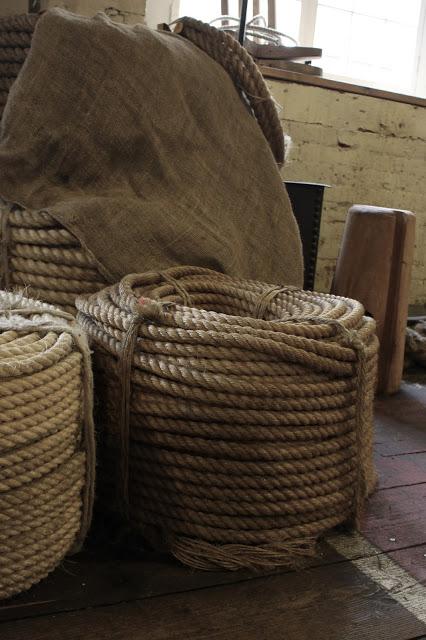
 The forty minute tour teaches you how rope is made, from the raw hemp from cannabis plants shipped over from Asia, through to the laborious process of cleaning it, picking out the bristles and burrs, to the hatchlings; sharp spiked devices that the hemp was ripped through to comb it before it was sent to the spinners after being drenched with whale oil to soften it. Once spun into yard, the ropes are then sent to the tarring shed for waterproofing so that the ropes can survive the rigours of a sea voyage. This process was so successful that perfectly preserved Chatham Rope is still being recovered from ship wrecks 150 years later. We learn about the role of that rope played in the success of the Royal Navy throughout the years, and the different names for different types of rope.
The forty minute tour teaches you how rope is made, from the raw hemp from cannabis plants shipped over from Asia, through to the laborious process of cleaning it, picking out the bristles and burrs, to the hatchlings; sharp spiked devices that the hemp was ripped through to comb it before it was sent to the spinners after being drenched with whale oil to soften it. Once spun into yard, the ropes are then sent to the tarring shed for waterproofing so that the ropes can survive the rigours of a sea voyage. This process was so successful that perfectly preserved Chatham Rope is still being recovered from ship wrecks 150 years later. We learn about the role of that rope played in the success of the Royal Navy throughout the years, and the different names for different types of rope.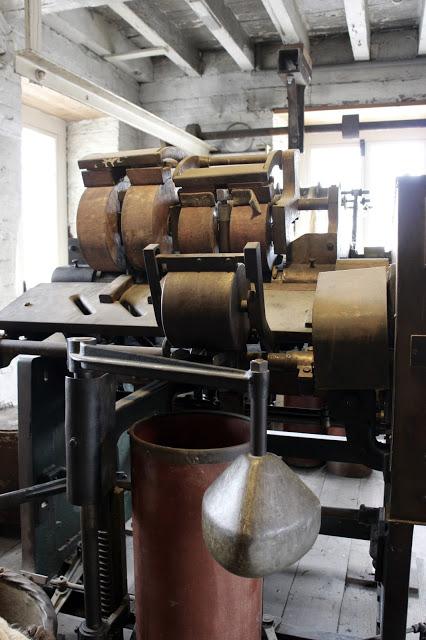
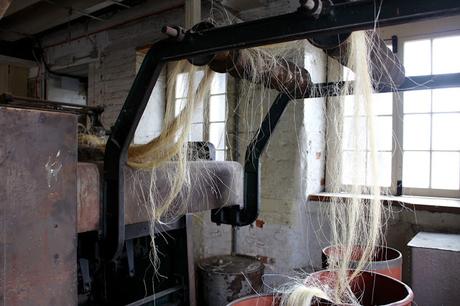
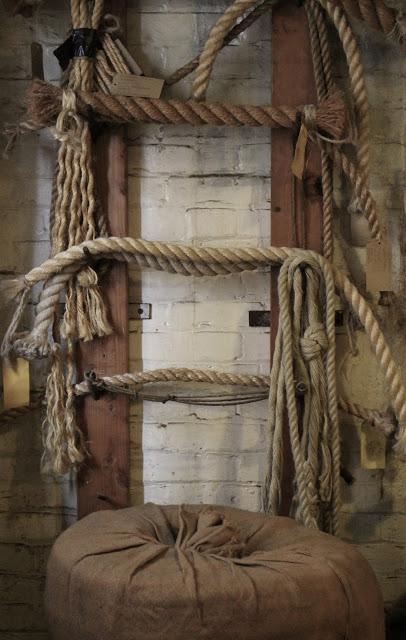 We are told about how people's roles were defined by the size of their hands and their fingers; women and children being more suited for the delicate work in the mills, reaching between spinning bobbins to join snapped strands together whilst men with larger hands were assigned to the heavy lifting roles on the Rope Walk and in the Hatching House and Tar Shed. Women and men were kept strictly segregated, with different entrances and staggered start times to ensure that they could not accidentally find a husband whilst at work. We also were told about some of the first women to demand equal pay, better working conditions and fair working hours to allow them to balance children and work. 80 women all signed a petition to the owner of the factory, requesting a meeting to discuss standards. All of it fell on deaf ears but it was some of the early indications of the pre-vote era of women who were starting to want a fairer society.
We are told about how people's roles were defined by the size of their hands and their fingers; women and children being more suited for the delicate work in the mills, reaching between spinning bobbins to join snapped strands together whilst men with larger hands were assigned to the heavy lifting roles on the Rope Walk and in the Hatching House and Tar Shed. Women and men were kept strictly segregated, with different entrances and staggered start times to ensure that they could not accidentally find a husband whilst at work. We also were told about some of the first women to demand equal pay, better working conditions and fair working hours to allow them to balance children and work. 80 women all signed a petition to the owner of the factory, requesting a meeting to discuss standards. All of it fell on deaf ears but it was some of the early indications of the pre-vote era of women who were starting to want a fairer society. 
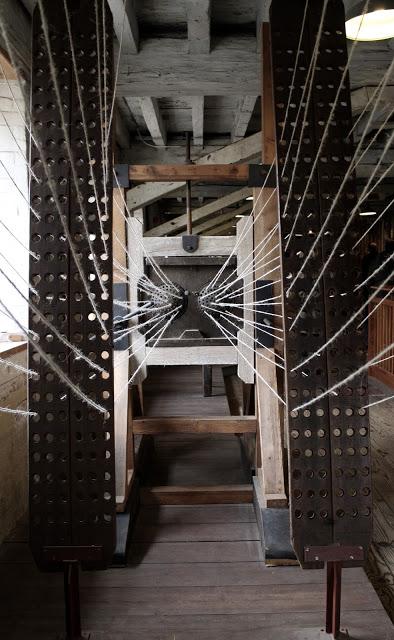 On the Rope Walk, a vast, stretching, 1/4 mile long single building where rope to this day is still made, you can also make your own rope if you volunteer for the demonstration. At least you don't have to do this at 6am when the Victorian Workers would have started work, finishing at 6pm after a gruelling day of back-breaking labor for very low pay. To get a feel for The Rope Walk and the importance of rope to Victorian life, try reading this poem by Henry Wadsworth Longfellow.
On the Rope Walk, a vast, stretching, 1/4 mile long single building where rope to this day is still made, you can also make your own rope if you volunteer for the demonstration. At least you don't have to do this at 6am when the Victorian Workers would have started work, finishing at 6pm after a gruelling day of back-breaking labor for very low pay. To get a feel for The Rope Walk and the importance of rope to Victorian life, try reading this poem by Henry Wadsworth Longfellow.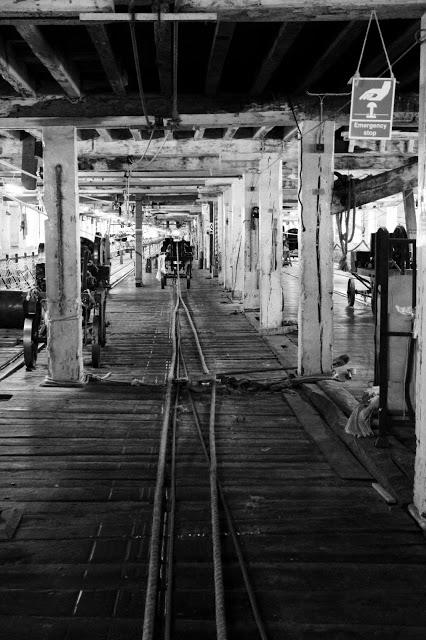
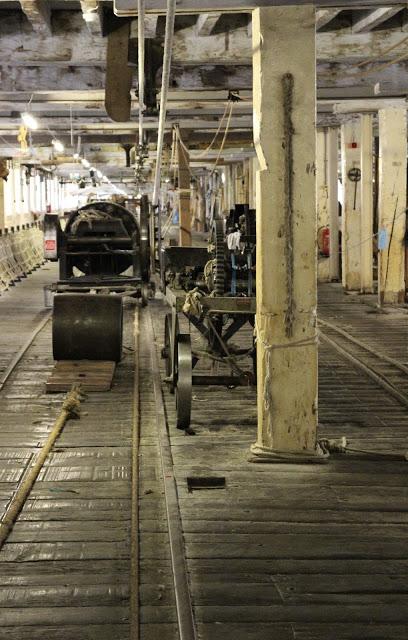 Yarns from the mill are stretched out and attached to large hooks at each end, then the machines are hand cranked to twist the yarn into the distinctive rope patterns you see today.
Yarns from the mill are stretched out and attached to large hooks at each end, then the machines are hand cranked to twist the yarn into the distinctive rope patterns you see today.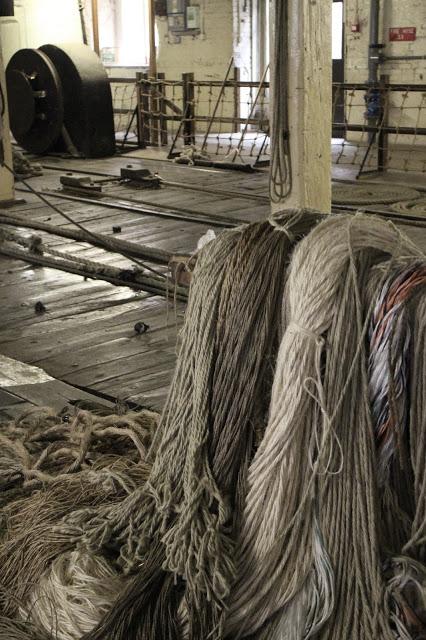 The Rope Walk itself was cool and quiet on the day we visited, but it would have been bitterly cold in the winter, noisy, dusty, and the vibrations from the machines would have rattled your teeth.
The Rope Walk itself was cool and quiet on the day we visited, but it would have been bitterly cold in the winter, noisy, dusty, and the vibrations from the machines would have rattled your teeth.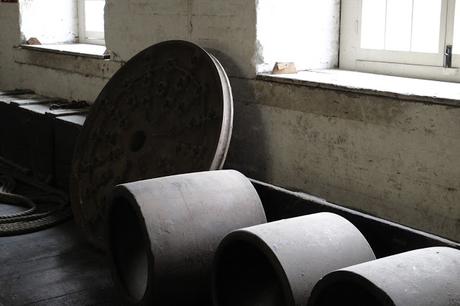 I don't know about you, but I'm grateful I don't have to work in those conditions.
I don't know about you, but I'm grateful I don't have to work in those conditions.